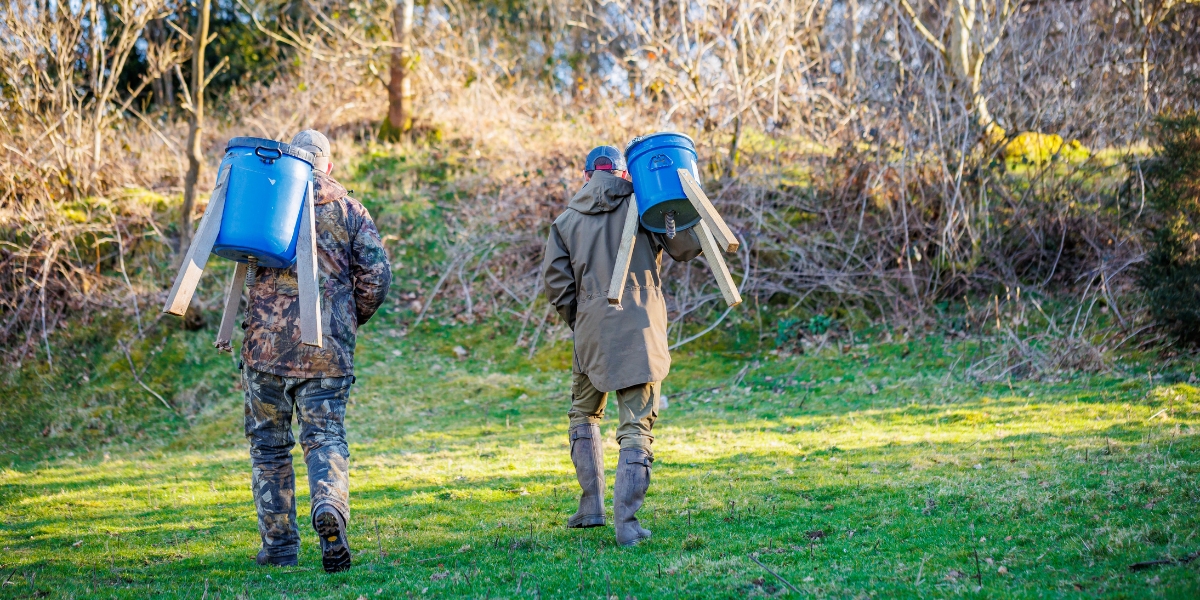
BASC members among the winners of new UK conservation awards
The winners of the Schöffel Countryside Awards, which reward dedication to wildlife management and conservation, have been announced.
Get information on the legal shooting season for mammals and birds in the UK.
Apply for funding for your project or make a donation today
Comprehensive information and advice from our specialist firearms team.
Everything you need to know about shotgun, rifle and airgun ammunition.
Find our up-to-date information, advice and links to government resources.
Everything you need to know on firearms law and licensing.
All the latest news and advice on general licences and how they affect you.


Two new scientific studies demonstrate the delicate balance between deer and gamebird management, and how one has the potential to complement the other, says Dr Cat McNicol.
From providing food and habitats for wildlife to supporting woodland regeneration, balancing nutrient cycles is a critical component of the work we undertake as a sector. However, as we all know, if we’re asked to stand on one leg for too long, maintaining balance is not always easy.
Two recent studies reveal how the removal of deer carcasses and supplementary feeding of gamebirds impact nutrient cycles, particularly the phosphorus cycle – in our ecosystems, presenting an interesting comparison of give and take.
Nutrient cycles, which involve moving elements like carbon, nitrogen, and phosphorus through the environment, are crucial for ecosystem health. They help plants grow, keep soil fertile, and enhance biodiversity.
Human activities – such as forestry, farming, and wildlife management – disrupt these cycles. Such disruptions can affect plant communities, soil nutrients, and food availability for wildlife. Understanding and managing these nutrient dynamics is key to maintaining natural habitats and achieving sustainability in both conservation and wildlife management.
Recent research highlights the crucial role of phosphorus in both deer and gamebird management. One study highlights how the removal of deer carcasses from woodlands can result in the loss of vital nutrients, particularly phosphorus.
On the other hand, research also shows that the supplementary feeding of gamebirds, as well as garden birds, adds excess phosphorus to the environment. So, without this becoming a lesson in chemistry and biology, what do these studies actually tell us?
A study on deer culling in Scotland found that removing deer carcasses from woodlands, often via stalking, can lead to a significant loss of phosphorus. Of course, we want to ensure animals are not wasted and much of the deer carcass goes into the human food chain.
However, when carcasses are left to decompose naturally, essential nutrients are recycled back into the ecosystem, improving soil fertility and supporting plant and animal life. Therefore, the approach taken in deer management has direct implications for nutrient availability and ecosystem health.
The loss of carcasses can have cascading effects, ultimately affecting the health of the entire ecosystem. At the same time, excessively high deer populations can negatively influence woodland regeneration and nutrient cycling due to trampling and over-browsing, making deer population control critical.

On the other hand, supplementary feeding practices for gamebirds and farmland/garden birds introduce substantial amounts of phosphorus into local ecosystems.
Seeds, grains, and nuts used for feeding are rich in phosphorus, and when dispersed by birds, they fertilise the landscape, leading to potential nutrient imbalances. This leads to a phenomenon known as eutrophication, where there is an excess of nutrients in the environment which can impact biodiversity.
The impact of supplementary bird feeding is generally less significant compared to agricultural management. However, with pheasants and other wildlife benefitting from supplementary food, these nutrients can be moved to other locations such as woodlands, where such agriculture practices are less impactful.
These studies illustrate a challenging dilemma in deer and gamebird management: are we stripping too many nutrients from woodlands by removing deer, while also adding too many through gamebird feeding?
The long-term consequences of these practices remain unclear, but they do highlight the importance of considering nutrient cycling beyond immediate wildlife management activities.
For both practices, there is an unseen cycling of nutrients that occurs once the feed has been eaten or the deer has been taken to the butcher. They are part of a larger picture of extraction and addition, influenced by broader environmental factors, material demands, and climate change.
Effective deer management and gamebird management must involve strategies that mitigate nutrient loss and excess, striving to maintain a balanced nutrient cycle. Perhaps, under certain circumstances, deer carcass removal and supplementary feeding could even complement each other to achieve balanced nutrient management.
Balancing nutrient cycles is akin to standing on one leg – a task that requires focus and constant adjustment, key is to focus on something in the distance to keep us steady.
Whether managing deer populations or feeding gamebirds, the goal should always be sustainable practices that maintain ecosystem health. Taking a common sense approach, focusing on sustainability and making evidence-based decisions – including adjusting management practices if needed – we can strive for a balanced ecosystem that benefits both wildlife and human interests.
Further reading and research
For more in-depth information, refer to the research papers discussed in this article:


The winners of the Schöffel Countryside Awards, which reward dedication to wildlife management and conservation, have been announced.

BASC is committed to seeing tougher penalties imposed under the Government’s new Animal Welfare Bill for those found guilty of gamebird worrying.

Every year, BASC presents a number of prestigious honours and awards, celebrating those who go the extra mile for the benefit of shooting and conservation.